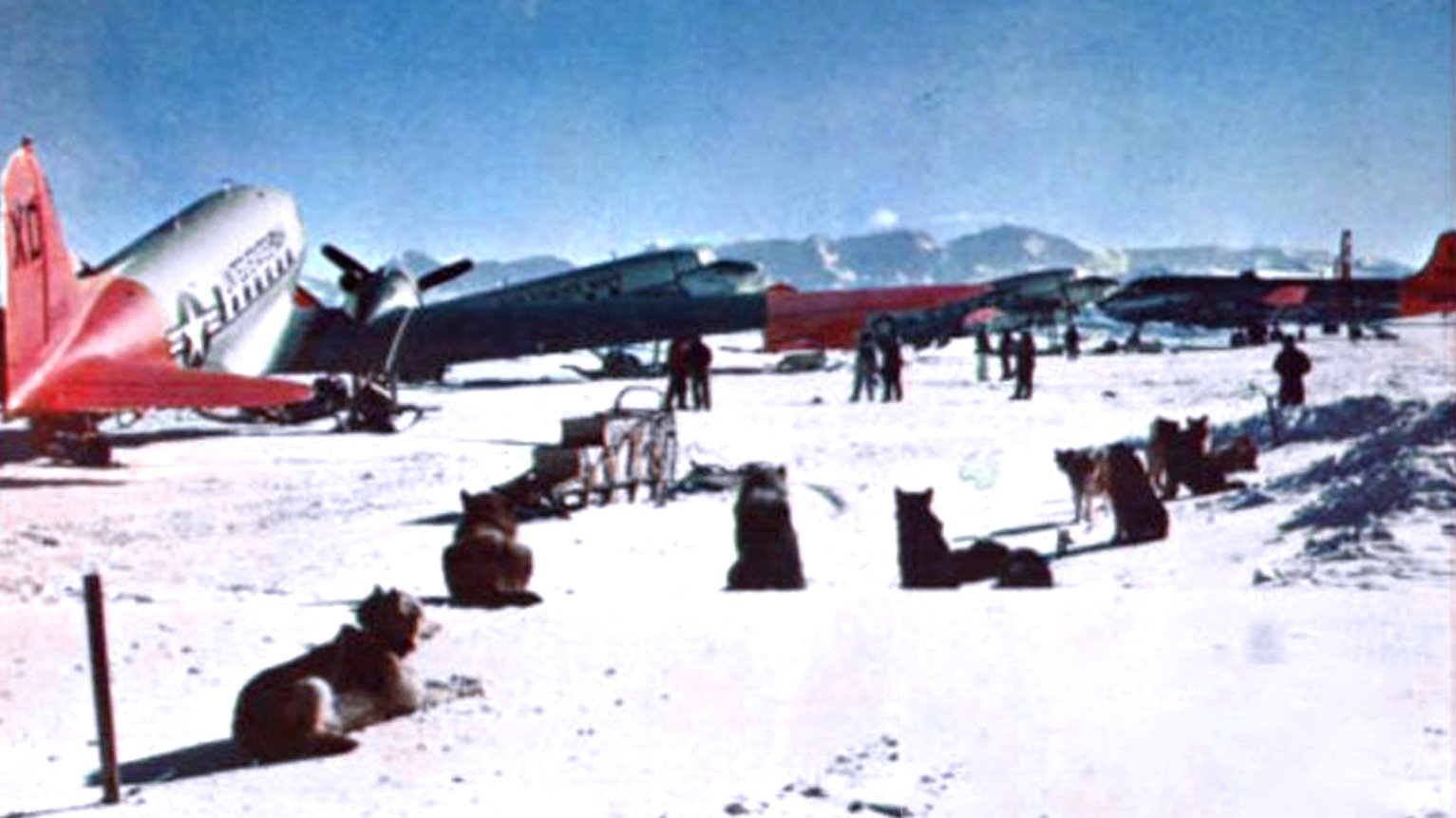Disney's "People and Places" takes us to the home of over 90% of the world's ice, where we learn a little of the statistics of this vast continent before spending a little time illustrating - with archive - the Amundsen and Scott race to the South Pole. The Norwegian made it home safely, the Britons weren't so fortunate. Now, Winston Hibler gets his book of handy facts out and tells us the polar plateau is 10,000 feet high. No four footed creatures, no insects - just mighty glaciers that break off into mammoth icebergs and tiny droplets of ice that forms on the water like a scum. Talking of might, we see just how effective modern day ice-breakers can be. Their visit to help set up seven bases to house task forces of American scientists charged with learning more about this frozen wilderness. The establishment of these little villages was not an easy operation but eventually the fleet was able to carry out "Operation Deep Freeze". 5,000 men and all their equipment made inroads into this pristine territory where their prefabricated houses of plywood and aluminium were constructed before being largely abandoned for winter. This is the season the photography could have become interesting, but this documentary choses to move indoors at this stage and show us how the people got by. Pity, that. Daylight returns and it's back to the building and exploring - and our first exposure to the penguins whom the people hoped to relocate from what was there ancestral breeding ground - a very early example of filmed human thoughtlessness! The remainder of the documentary follows the intrepid work of the summer crews left to finish building and photograph some of the beautiful and hitherto untouched natural features (until they dynamited them, that is). Pretty soon the landscapes were now dotted with these little towns with all of their concomitant junk, rubbish and rusting wreckage. A terrible plane crash killed four people and reminded everyone that technology isn't always the answer in this hostile terrain. Next, they wanted to install a "city for science" on the South Pole itself and I'm afraid I rather lost interest in the scientific elements of this and started to wonder at the thoughtless vandalism being carried out here with no regard for the damage being done. The photography is astonishing but this all too quickly becomes an American Armed forces flag-waving exercise, and also increasingly annoying.


